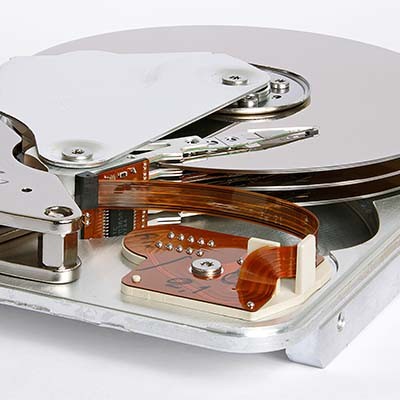Directive Blogs
Tech Term: Hard Drive
Most computer users know of the hard drive, but how many actually know what it does? Depending on who you ask, you’ll get different degrees of answers. It’s rare that you’ll encounter the ordinary person who knows what the hard drive is, as well as how it works or what it does. This week’s tech term is the hard drive, so let’s dig in.
What the Hard Drive Does
The hard drive is one of the computer’s primary devices. Without it, there could be no data storage on the device--at least, not permanently. The computer’s operating system and hardware drivers will typically be installed on the hard drive, as well as any programs, data, and media. Having a large hard drive means that you’ll experience fewer issues with storing all of your data on it. Hard drives typically come in two different types: the traditional hard disk drive (HDD), and the solid-state drive (SSD).
How Hard Drives Work
The details of how hard drives work will vary depending on which type of drive it is. They are as follows:
HDD: A hard disk drive uses several internal components to store data, including the disk controller, the platter, the read/write arm, and the actuator. The disk controller communicates with the rest of the device as to how the data coming in and going out will be dispersed. Guided by the controller, the actuator will position and maneuver the read/write arm over the spinning platter. The platter is where all of the drive’s data is stored in binary code based on the platter’s magnetic polarities. These polarities are then rewritten and read according to the read/write arm.
SSD: A solid state drive runs not on moving parts, but on flash memory. This means that they are less prone to damages, much quieter overall, and able to function without nearly as much power. They are the favored memory device found in laptops and mobile devices. Of course, these benefits generally come with a higher price tag, but this inconvenience has lessened somewhat in recent years.
What’s the Difference?
The biggest difference between HDD and SSD comes from their origin stories. The HDD first hit the market back in 1956 through the ingenuity of IBM, while the SSD was initially developed by SanDisk in 1991. Flash-based SSD also became a thing in 1995 thanks to the developers at M-Systems. There is also a major difference in the overall longevity of each storage method, as the moving parts of the HDD make them more prone to a shorter lifespan.
Which One is Better?
Depending on your needs, you’ll need to pick one of the two types of devices. The HDD needs stability more than anything else, but it’s more affordable than the alternative. On the other hand, SSD is primarily used for mobile devices like laptops due to their overall durability. In general, if you can afford SSD, you want to go with it.
Do you need further help understanding the major differences between SSD and HDD? Give Directive a call at 607.433.2200.


